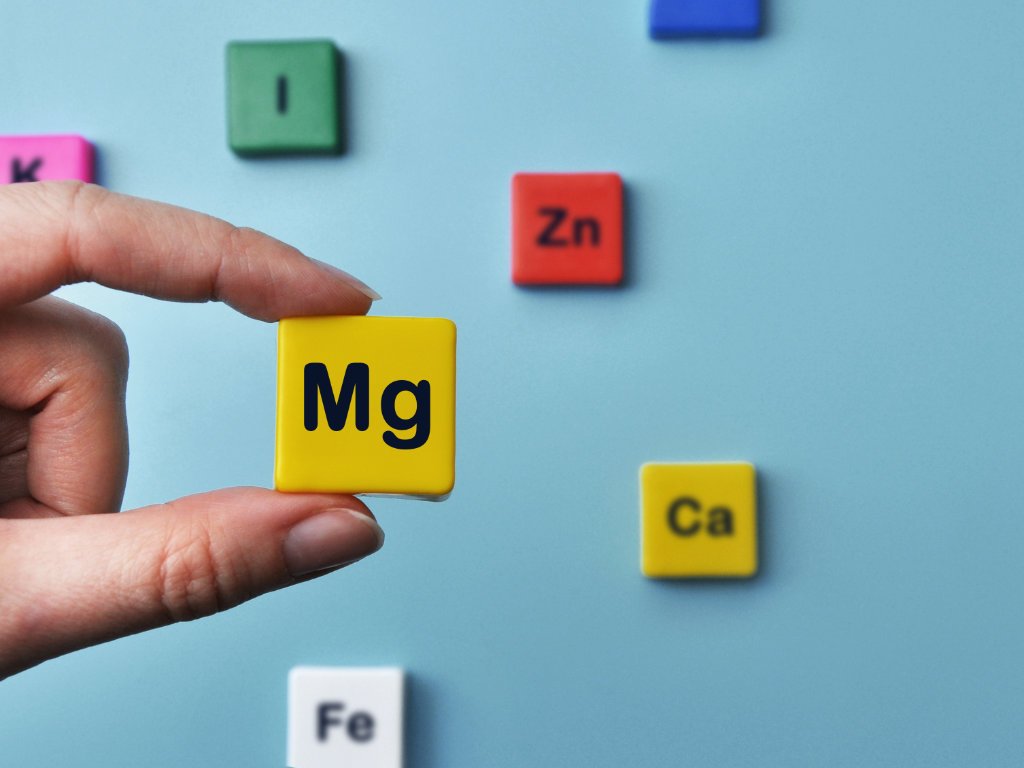Table of Contents
If you’ve ever been doubled over with a pounding headache, clutching your temples and desperately searching for relief, you’re not alone. Millions of people worldwide struggle with headaches and migraines, and while there are countless remedies out there, one natural solution that’s been gaining serious attention is magnesium for headaches.
But here’s the thing – is it actually effective, or is it just another wellness trend? Let’s dive deep into the science, explore what research tells us, and figure out if magnesium might be the missing piece in your headache management puzzle.
What Exactly is Magnesium and Why Should You Care?
Before we jump into how magnesium might help with your headaches, let’s talk about what this mineral actually does in your body. Magnesium is essentially your body’s multitasking champion – it’s involved in over 600 enzymatic reactions. Think of it as the behind-the-scenes worker that keeps everything running smoothly.
This essential mineral plays crucial roles in:
- Nerve signal transmission (pretty important for headache management!)
- Muscle contraction and relaxation
- Energy production at the cellular level
- Blood vessel tone regulation
- Protein synthesis
What’s fascinating is that many of us are walking around with suboptimal magnesium levels without even knowing it. Modern diets, stress, certain medications, and even intense exercise can deplete our magnesium stores. And guess what? That deficiency might be contributing to your headache problems.
Understanding the Headache Spectrum: It’s Not All the Same
Not all headaches are created equal, and understanding the differences can help us figure out where magnesium fits into the picture. The main players in the headache world include:
Tension-type headaches – These are your “everyday” headaches, often described as a tight band around your head. Stress, poor posture, and muscle tension are usually the culprits.
Migraines – These are the heavy hitters. We’re talking throbbing pain (often on one side), sensitivity to light and sound, nausea, and sometimes those weird visual disturbances called aura. Migraines can knock you out for hours or even days.
Cluster headaches – Less common but incredibly painful, these come in cycles and are often described as burning or piercing pain around one eye.
The interesting thing about migraines specifically is that they seem to have a stronger connection to magnesium levels than other headache types. Research suggests that people with migraines often have lower magnesium levels in their blood, brain, and even saliva compared to those who don’t get migraines.

The Magnesium-Headache Connection: What Does Science Tell Us?
Here’s where things get really interesting. Multiple studies have found a link between magnesium deficiency and increased headache frequency and severity. But how exactly does low magnesium contribute to headaches?
Think of your brain as a complex electrical system. When magnesium levels drop, your neurons become hyperexcitable – kind of like having faulty wiring that sparks too easily. This can trigger something called cortical spreading depression, which is basically a wave of electrical activity that moves across your brain. This phenomenon is thought to be a key player in migraine development.
Low magnesium also affects:
- Blood vessel function – Your blood vessels might not dilate and constrict properly
- Neurotransmitter balance – The chemical messengers in your brain can get out of whack
- Inflammation levels – Magnesium helps keep inflammatory processes in check
- NMDA receptor activity – These receptors are involved in pain transmission
A comprehensive review published in the National Center for Biotechnology Information highlights how magnesium deficiency can contribute to various neurological symptoms, including headaches.
Can Magnesium Actually Prevent Migraines?
Now for the million-dollar question: does magnesium supplementation actually work for headache prevention? The research is pretty encouraging, especially for migraines.
Several randomized controlled trials have shown that oral magnesium supplementation can significantly reduce migraine frequency. One particularly compelling study found that people taking 400-600 mg of magnesium daily experienced about a 40% reduction in migraine attacks compared to those taking a placebo.
But here’s what’s really cool – magnesium isn’t just a one-trick pony. Research published in Pain Physician Journal shows that magnesium works through multiple pathways:
- Blocking NMDA receptors – This helps reduce pain signal transmission
- Stabilizing blood vessels – Preventing the vascular changes associated with migraines
- Reducing cortical spreading depression – Stopping that electrical storm in your brain
- Modulating neurotransmitters – Keeping your brain chemistry balanced
Magnesium for Acute Headache Relief: The IV Approach
While oral magnesium is great for prevention, what about when you’re in the middle of a crushing migraine? This is where intravenous magnesium comes into play.
Emergency departments and headache clinics sometimes use IV magnesium sulfate to treat acute migraines, especially in people with confirmed magnesium deficiency. However, IV magnesium isn’t something you can do at home – it requires medical supervision and is typically reserved for severe cases or when oral medications aren’t effective.
The “Magnesium Headache Cure” Claims: Let’s Keep It Real
Here’s where I need to pump the brakes a bit. You’ll find plenty of websites and social media posts claiming that magnesium is a “cure” for headaches. While the research is promising, it’s important to have realistic expectations.
Magnesium isn’t a magic bullet. It works best as part of a comprehensive headache management strategy. Some people see dramatic improvements, while others notice more modest benefits. The response seems to depend on factors like:
- Your baseline magnesium levels
- The type of headaches you experience
- Your overall health status
- Other medications you’re taking
- Lifestyle factors like stress, sleep, and diet
Think of magnesium as a valuable player on your headache management team, not necessarily the MVP who’s going to single-handedly win the game.
Which Type of Magnesium Should You Choose?
Not all magnesium supplements are created equal, and this is where things can get confusing. Walk down any supplement aisle, and you’ll see magnesium oxide, magnesium citrate, magnesium glycinate, magnesium malate… the list goes on.
For headache prevention, here’s what the research tells us:
Magnesium oxide is the most studied form for migraine prevention. Most clinical trials have used this form, typically at doses of 400-600 mg daily. However, it’s not the most bioavailable form and can cause digestive upset in some people.
Magnesium citrate and magnesium glycinate are generally better absorbed and tolerated. They’re less likely to cause the dreaded “magnesium diarrhea” that some people experience with oxide forms.
Magnesium sulfate is what’s used for IV treatments but isn’t typically taken orally for headache prevention.
The American Migraine Foundation recommends starting with a well-absorbed form like citrate or glycinate if you’re prone to digestive issues.

What’s the Right Magnesium Dosage for Headaches?
Dosing is crucial, and it’s definitely not a “more is better” situation with magnesium. Here’s what the research suggests:
For migraine prevention:
- Most studies use 400-600 mg of elemental magnesium daily
- Start with 200-300 mg and gradually increase if tolerated
- Take with food to improve absorption and reduce stomach upset
For acute treatment:
- IV magnesium (typically 1-2 grams) requires medical supervision
- Oral magnesium isn’t typically effective for acute attacks
Important considerations:
- The recommended daily allowance for magnesium is around 310-420 mg for adults
- Your supplement dose should account for dietary magnesium intake
- Some people need higher doses, while others respond to lower amounts
Always – and I can’t stress this enough – consult with a healthcare provider before starting any supplementation regimen, especially if you have kidney problems, heart conditions, or take other medications.
How to Actually Use Magnesium for Headaches (The Practical Stuff)
Let’s get into the nitty-gritty of incorporating magnesium supplementation into your routine effectively:
Timing matters: Take your magnesium in divided doses throughout the day rather than all at once. This improves absorption and reduces the risk of digestive issues. Many people find taking it with dinner works well since magnesium can be mildly relaxing.
Start slow: Begin with 200 mg daily for a week, then gradually increase. Your body needs time to adjust, and this approach helps you identify the lowest effective dose.
Food factors: Taking magnesium with food improves absorption and reduces stomach irritation. Avoid taking it with high-fiber meals, dairy products, or calcium supplements, as these can interfere with absorption.
Be patient: Unlike popping an ibuprofen, magnesium’s preventive effects build over time. Most studies show benefits after 8-12 weeks of consistent use. Don’t expect overnight miracles.
Beyond Supplements: Magnesium-Rich Foods That Actually Taste Good
While supplements are convenient, you can also boost your magnesium intake through food. And honestly, this approach has some advantages – you’re getting magnesium along with other beneficial nutrients, and there’s less risk of overdoing it.
Powerhouse magnesium foods include:
- Dark leafy greens: Spinach, Swiss chard, and kale are magnesium superstars
- Nuts and seeds: Pumpkin seeds, almonds, and cashews pack a magnesium punch
- Whole grains: Quinoa, brown rice, and oats contribute significant amounts
- Legumes: Black beans, chickpeas, and lentils are excellent sources
- Dark chocolate: Yes, really! Dark chocolate (70% cacao or higher) is surprisingly rich in magnesium
For more ideas on incorporating nutrient-dense foods into your diet, check out our comprehensive guide to daily nutrition superfoods that can transform your overall health.
The Side Effect Reality Check
Let’s be honest about potential downsides, because no supplement is completely without risk. Magnesium supplementation is generally safe for most people, but there are some things to watch out for:
Common side effects:
- Diarrhea (the most frequent complaint)
- Nausea or stomach cramps
- Dizziness (usually from taking too much too quickly)
Who should be extra cautious:
- People with kidney disease (magnesium can accumulate dangerously)
- Those taking certain medications (antibiotics, diuretics, proton pump inhibitors)
- Individuals with heart rhythm disorders

The good news is that most side effects are dose-dependent and reversible. If you experience persistent digestive issues, try switching to a different form of magnesium or reducing your dose.
What the Experts Are Saying: Recent Research Updates
The scientific community’s interest in magnesium for headaches continues to grow, and recent research has provided some fascinating insights.
A 2021 systematic review published in Sage Journals analyzed multiple studies and confirmed that magnesium supplementation significantly reduces migraine frequency and severity. What’s particularly interesting is that the benefits seem to be most pronounced in people with lower baseline magnesium levels.
Healthline’s comprehensive analysis of the current research emphasizes that while magnesium shows real promise, individual responses vary significantly. This reinforces the importance of working with a healthcare provider to develop a personalized approach.
Combining Magnesium with Other Headache Strategies
Here’s where magnesium really shines – it plays well with others. Rather than relying solely on supplementation, consider it part of a holistic approach to headache management.
Synergistic strategies include:
- Stress management: Since stress is a major headache trigger, combining magnesium with techniques like meditation or yoga can be powerful. Our guide to meditation techniques for mental peace offers practical strategies.
- Sleep optimization: Poor sleep is both a headache trigger and something magnesium can help improve
- Hydration: Dehydration is a common headache trigger, and proper hydration supports magnesium absorption
- Regular exercise: Moderate exercise can reduce headache frequency, and magnesium supports muscle recovery
The Hormonal Connection: Women and Magnesium
This is particularly relevant for women, as hormonal fluctuations can significantly impact both magnesium levels and headache patterns. Many women notice their migraines worsen around menstruation, and there’s a good reason for this.
Estrogen levels affect magnesium absorption and utilization. As estrogen drops before menstruation, magnesium levels can also decline, potentially triggering migraines in susceptible individuals. This is why some women find magnesium particularly helpful for menstrual migraines.
If you’re dealing with hormone-related headaches, you might find our article on hormonal balance tips particularly useful for understanding the bigger picture.
Frequently Asked Questions About Magnesium for Headaches
How long does it take for magnesium to work for headaches?
Most people don’t see immediate results with oral magnesium. Clinical studies typically show benefits after 8-12 weeks of consistent supplementation. However, some people notice improvements in sleep quality and stress levels within a few weeks, which can indirectly help with headaches.
Can I take magnesium with my current headache medications?
Generally yes, but always check with your healthcare provider. Magnesium can interact with certain antibiotics and may enhance the effects of some blood pressure medications. It’s particularly important to discuss this if you’re taking prescription migraine medications.
Is it better to take magnesium at night or in the morning for headaches?
There’s no definitive answer, but many people find taking magnesium in the evening helpful since it can promote relaxation and better sleep. Some prefer splitting their dose between morning and evening. Experiment to see what works best for you.
What’s the difference between magnesium for headaches vs. other supplements like riboflavin?
Both magnesium and riboflavin (vitamin B2) have research supporting their use for migraine prevention, but they work through different mechanisms. Some people benefit from combining them, while others respond better to one or the other. It’s often worth trying magnesium first since it has broader health benefits.
Can children take magnesium for headaches?
Children can develop migraines too, and some research suggests magnesium may help. However, dosing is very different for children, and this absolutely requires medical supervision. Never give adult doses to children.
When to Seek Professional Help
While magnesium is generally safe and effective for many people, there are times when you need more than a supplement. Seek immediate medical attention if you experience:
- Sudden, severe headaches unlike anything you’ve experienced before
- Headaches accompanied by fever, stiff neck, or confusion
- Headaches after a head injury
- Progressive worsening of headaches over time
- Vision changes or weakness along with headaches

Even for routine headache management, consider consulting with a healthcare provider who specializes in headache medicine. They can help you develop a comprehensive treatment plan that may include magnesium alongside other evidence-based approaches.
WebMD’s migraine resource center provides excellent information about when to seek professional help and what to expect from different treatment approaches.
The Bottom Line: Is Magnesium Worth Trying?
After digging through all the research and looking at real-world applications, here’s my take: magnesium for headaches is definitely worth considering, especially if you’re dealing with frequent migraines or have risk factors for magnesium deficiency.
The evidence is solid, the safety profile is good for most people, and the potential benefits extend beyond just headache prevention. Even if magnesium doesn’t completely eliminate your headaches, you might notice improvements in sleep, stress levels, and overall well-being.
Start with realistic expectations: You’re not likely to see dramatic changes overnight, and magnesium works best as part of a comprehensive approach to headache management. But for many people, it can be a valuable piece of the puzzle.
What I’d recommend: Try a high-quality magnesium supplement (citrate or glycinate forms) at 200-400 mg daily for at least 12 weeks. Keep a headache diary to track any changes, and work with a healthcare provider to optimize your approach.
Remember, managing headaches effectively often requires a multifaceted approach that might include stress management, sleep optimization, dietary changes, and yes, possibly magnesium supplementation. For more comprehensive strategies on managing stress and improving overall wellness, explore our mental and emotional wellness resources.
Your Next Steps
If you’re ready to explore magnesium for your headaches, start by talking to your healthcare provider about whether it makes sense for your situation. Keep track of your headaches, try to identify triggers, and be patient as you work toward finding relief.
Have you tried magnesium for your headaches? What was your experience? Drop a comment below and share your story – your experience might help someone else who’s struggling with chronic headaches.
And don’t forget to subscribe to our newsletter for more evidence-based health and wellness content. We’re always diving deep into the latest research to bring you practical, actionable advice for better health.
Remember, you don’t have to suffer in silence with chronic headaches. With the right combination of strategies – possibly including magnesium supplementation – many people find significant relief and get back to living their lives fully.


